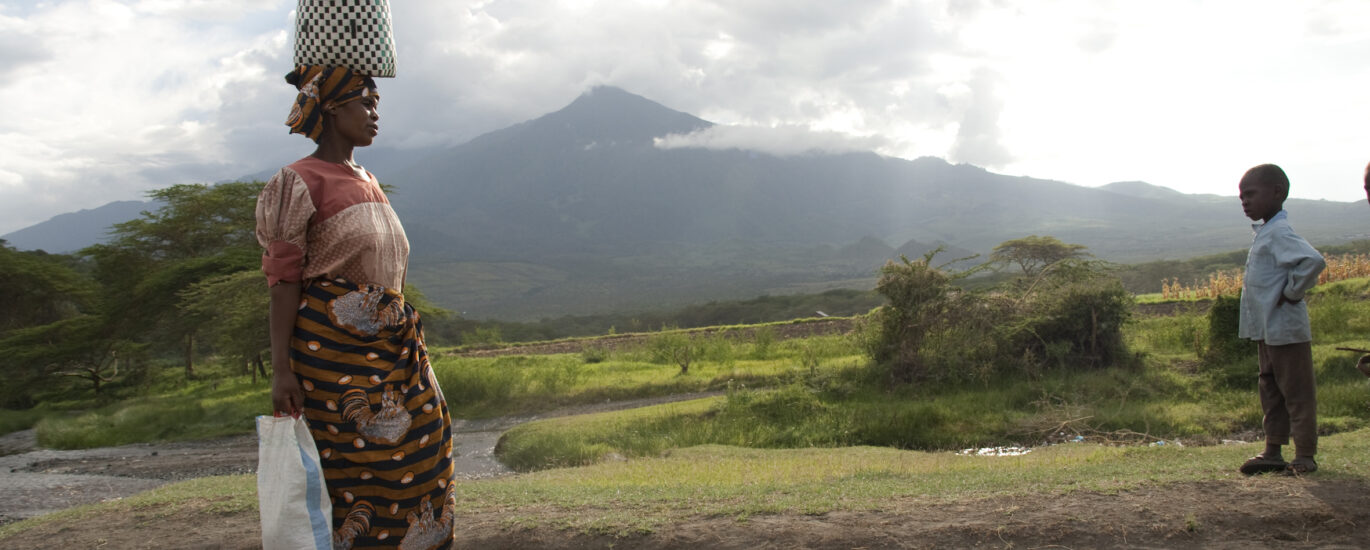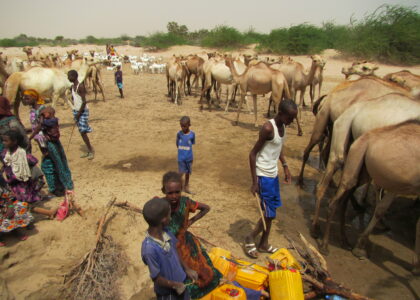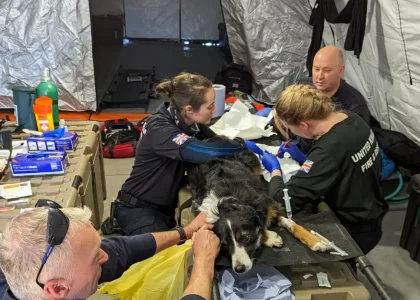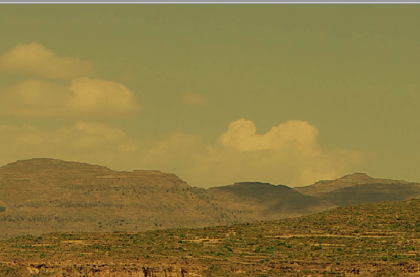Jennifer Eddis[1]
This paper is produced for the Food We Want[2] project.
April 5th 2014
London
1.Introduction
The term ‘Food Security’ is a well-recognised concept that has been utilised by many of the mainstream multilateral developmental organisations and the international media. Coined during the 1970s, the concept of Food Security has continued to gather attention in light of the food price crises and reoccurring droughts and famines, and it is generally used to describe the global effort to address the problem of hunger and malnutrition.
However, the strategies and policies implemented under the Food Security paradigm have done little so far to curb global hunger and malnutrition. While aggregate production may have increased, there are still an estimated 842 million people in the world who do not have enough to eat.[3] Population increase alone does not account for this flaw in the food system, as this number has in fact fallen by 17% since 1990; but this is clearly still not enough.
“Food Sovereignty” is a complementary yet fundamentally different concept that emerged from the political discourse of Food Security during the 1990s. The ideas behind the Food Sovereignty is most prominently articulated by La Via Campesina, an International Peasant Movement composed of peasant farmers, small/medium-scale producers, and landless producers, from rural communities around the world. Food Sovereignty is defined by La Via Campesina as:
“The right of peoples to healthy and culturally appropriate food produced through ecologically sound and sustainable methods and their right to define their own food and agriculture systems…It puts the aspirations, needs and livelihoods of those who produce, distribute and consume food at the heart of food systems and policies rather than the demands of markets and corporations.”[4]
The fundamental difference between Food Security and Food Sovereignty is that Food Security seeks to address the issue of food and hunger through the current dominant food regime, whereas Food Sovereignty challenges this paradigm and seeks to build alternatives, and attempts to address the root causes through a bottom-up, grass-roots approach. In order to explore the ideological underpinnings of Food Sovereignty we must first understand its relation to Food Security.
2.‘Food regimes’ and the emergence of Food Security
It is useful to employ the concept of ‘food regimes’ used by Friedmann and McMichael[5] as a means to understand how political and economic ideologies have shaped the international agricultural policies and the production and consumption of food. The notion of ‘food security’ was first articulated at the 1974 World Food Conference, where the global food security system was to “ensure adequate availability of, and reasonable prices for, food at all times…”[6] Later definitions include “food security…will be achieved when all people, at all times, have physical and economic access to sufficient, safe and nutritious food to meet their dietary needs and food preferences for an active and healthy lifestyle.”[7]
McMichael argues that in the early 1990s, global food and agricultural policy shifted towards the ‘globalisation project’ – characterised by trade liberalisation and structural adjustment policies.[8] This was accompanied by a corporate food regime that, for many developing countries led to an increased “focus on industrial, export-oriented agriculture, increasing the dependence of farmers on transnational agro-food corporations for their means of production and the on-going disposition and displacement of peasant population and their cultures of provision”.[9]
It is relatively widely acknowledged that the market-driven neoliberal discourse behind the food security model has been largely unsuccessful in its goal of attaining ‘pro-poor growth’, and the reduction of global hunger. In a report published by the FAO titled The State of Food Security in the World, it is stated that food security and economic development require growth in the agricultural sector, not least because 70% of the global population pursue agrarian livelihoods. The focus therefore is on increasing agricultural productivity as a means for farmers to compete in global markets and meet the demands of a growing global population.
However such an approach must be combined with the elimination of farming subsidies that currently heavily distort markets and are not likely to change in the near future.[10] Clearly, this model is failing, when we look at the sustained levels of rural poverty and chronic food insecurity in developing countries.[11] As such the Food Security logic is critiqued for “[disenfranchising] global farmers in favour of corporate production, profit and monopolisation”[12]. Arguably, Food Security was conceptualised in the ‘corridors of global power’, and the mainstream definitions of Food Security inevitably “echo the neoliberal discourse of the globalisation project”[13].
Food Aid is often cited as an example of this. While emergency food aid has undoubtedly saved lives in the face of famine, drought, and conflict in many parts of the developing world, there is less consensus regarding what the long term impact of Food Aid is on local markets and production systems. In a statement in 1957, the US Politician Hubert Humphrey is quoted as saying that reports on dependency on the US by food aid recipients was “good news” as “if you are looking for a way to get people to lean on you and to be dependent on you, in terms of their co-operation with you, it seems to me that food dependence would be terrific”[14].
Food Aid has been used as convenient method for donor countries to dispose of their surplus production and meet aid targets at the same time. An example of this is known as the ‘tortilla crisis’ in Mexico, which in the space of a few decades became dependent upon imports of US corn. The country was therefore hard hit when prices of corn shot up with the sharp demand of corn for agro-fuels. The dependence on US corn started with the Structural Adjustment Programme (SAP) policies of the 1980s, which effectively dismantled government programmes and institutions in rural Mexico. These policies, combined with the unilateral liberalisation of agricultural trade and the North American Free Trade Agreement (NAFTA) severely eroded peasant agriculture in Mexico. As a result, it became a net food importer, and was taken into “a state of acute food insecurity, permanent economic crisis, political instability and uncontrolled criminal activity.”[15] In light of this example, it would seem problematic that the notion of Food Security does not address the problem of aid dependency, and is not inherently concerned with building long-term stability and resilience of regional markets and production systems.
Another critique of Food Security is that its focus on competition and economic advantage adopted effectively de-politicises food and agriculture and removes it from the democratic sphere. As Patel points out, the definition of food security holds no concern for the processes through which food security is achieved. The food security approach is flawed in that it is “agnostic about the production regime, about the social and economic conditions under which food ends up on the table.”[16] In a sense it looks at the symptoms without trying to address the underlying causes. A similar argument is articulated by Schanbacher, in that the food security model is “founded on, and reinforces, a model of globalisation that reduces human relationships to their economic value”[17], and he sees this underlying economic conception of food security as fundamentally problematic.
What these arguments have in common is the conviction that the Food Security frame has failed to address the issue of food and hunger because food is more that an economic commodity. Instead, we must recognise the “interconnection between human dignity, basic freedoms, and creative production”[18]. Food Sovereignty challenges the underlying assumptions of the Food Security approach and instead proposes a ‘counter frame’, where food is in fact very much a political, social and cultural issue. The Food Sovereignty model articulates the need to de-commercialise and re-politicise food, while simultaneously incorporating its social and cultural value. It thus calls for a fundamental overhaul of previous conceptions of food and hunger.
3.Food Sovereignty as a ‘counter-frame’
It is argued that “food security has not been achieved for hundreds of millions of the world’s poor, (therefore) it is imperative that the Food Sovereignty model take centre stage in the fight against global hunger and malnutrition”[19]. Food Sovereignty presents a different world view to the neoliberal ideas of competition, liberalisation and economic growth; one that is characterised by “sustainable development, environmental conservation, genuine agricultural reform, mutual dependence and local, small-scale community prosperity.”[20]
Food Sovereignty sees cultural value in the production and consumption of food, where its importance goes beyond the nutritional or calorific contents to support a healthy and active life. It understands that food production has supported and shaped the livelihoods of peoples across the world engaged in small-scale production for generations.
It is claimed that Food Sovereignty is particularly pertinent in the face of growing challenges and threats from climate change, which food security does not necessarily address, by reframing the way we understand the value of land and the resources that it provides. Food Security models of addressing hunger have called for the intensification of production, introducing more ‘efficient’ and productive methods such as monocropping. The drive for efficiency has dominated modern development theories, from the time of Adam Smith and the industrial revolution. Following this logic, the Green Revolution exported agricultural innovations which included the simplification and standardization of seed varieties (particularly those of major cereals) and the extensive application of chemical fertilisers and pesticides. The aim was to improve food security by increasing productivity; and indeed, during the 90s figures from the World Resources Institute showed that the production of cereals increased by 17%, and meat by 46%.[21]
However, ecologically, the efficiency-driven simplification reduced diversity, led to a decreased resistance to pests, which in turn requires a higher chemical input. The resulting destabilisation of ecosystems has been linked to the degradation of soil, the depletion of nutrients, desertification, and ground water shortages and contamination. Wittman argues that this not only reduces the resilience of eco-systems and their inhabitants to challenges posed by climate change but also ultimately reduces the stability of food production in the long term.[22]
One of the most important points that Food Sovereignty brings into the Food Security debate is its ability to discuss the social control of the food system. In acknowledging that there are cultural and social dimensions to food, it begins to consider the value of social access over the market supply of food as well as the decision-making processes of issues related to food production, right through to the way in which food is processed for the end consumer.
4.Food Sovereignty and its transformative potential
Michel Pimbert argues that the modernist development paradigm that has encouraged urbanisation and industrialisation by developing a “corporate thrust for radical monopoly control over the global food system”[23] needs to be subverted and replaced with a regeneration of “autonomous food systems”. It is argued that Food Security has resulted in the loss of “autonomous spaces”[24] where farmers and local producers no longer have a voice in their own farming systems and markets.
Food Sovereignty calls for a mobilisation of small-scale producers to build spaces for participation for people to take control back from the large agro-corporations into the hands of producers. By recreating autonomous spaces for self-determination and decision-making, we can also recreate localised food systems, livelihoods and ecologies.[25] Pimbert argues that Food Sovereignty can be best understood as a “transformative process that seeks to recreate the democratic political realm and regenerate a diversity of autonomous food systems based on equity, social justice and ecological sustainability”.[26]
This multidimensional approach requires collective action, which is based on social cohesion and spaces for participation. In its global activism, La Via Campesina has striven to create such spaces, where producers from around the world can unite and support a collective imperative to re-democratise the food system, and bring back control into the hands of small-scale producers who have been marginalised by the corporate monopoly. It thus takes a “transgressive approach” which is oriented towards the people who hold the right to democracy and participation and not towards the institutions that police them.[27]
Having said this, the rights-based approach is in danger of entering the rhetorical sphere, and it is difficult to see what concrete impacts can be brought about by this united, but arguably vague and heavily ideological, social movement. Sceptics challenge the presumed benefits that will come from the localisation of food systems, by claiming that such changes would bring down levels of aggregate production and have a negative impact on global food stock levels. With problems of obesity growing in developed countries, there is growing awareness that the problem is not only about production, but what we produce, and where it is distributed. The call for a shift in political and social attitudes towards farming and food in general is therefore increasing, but it is arguably intangible, and can be easily dismissed as an utopian ideal that is both impractical and unrealistic.
5.Making Food Sovereignty Plausible – Agroecology
There is now emerging support to bring agroecological approaches into the Food Sovereignty discourse, and to help build a practical alternative to the current food system. Agroecology refers to methods that incorporate the intensification of small-scale production techniques and farming systems, in a way that is both socially and environmentally sustainable. Where many modern agricultural development projects have disregarded the heterogeneity of traditional farming systems, “research shows that traditional crop and animal combinations can often be adapted to increase productivity”[28]. Its core principles incorporate nutrient and energy recycling, crop diversification and maintenance of local eco-systems and biodiversity.[29] Examples include techniques to improve natural resource management such as Farmer Managed Natural Regeneration (FMNR), intercropping and crop rotation, mulching, minimal tillage techniques such as Zai like in Burkina Faso and half-moon planting pits, as well as the production of compost and fertiliser from animal waste and the use of agroforestry to reduce wind permeation and topsoil erosion.[30]
Crucially, agroecology is based on the use of local knowledge and skills that are often integrated part of local livelihood systems, and hold both cultural and environmental significance. It is also aware of the increasing challenges brought about by climate change and environmental degradation, and seeks to support farming communities to devise adaptive livelihood strategies. Recent research conducted on sustainable agricultural practices in several African countries suggests that the effective dissemination of sustainable agricultural practices is conditioned on the use of collective action at the community level as well as the implementation of simple and culturally appropriate agricultural practices that make us of local natural resources that are easily available.[31]
There is already mounting evidence behind the claim that where practiced, agroecology is having “immediate, global implications: they are among the first examples of poor farmers’ successes in enhancing food security while adapting to climate change”.[32] Simple procedures that take inspiration from basic principles based on local knowledge allows for practices to be more easily adopted by smallholders.[33] Olivier De Schutter, the UN Special Rapporteur on the Right to Food, is an advocate of Food Sovereignty, and in particular the use of agroecology “as a way to improve the resilience and sustainability of food systems”.[34]
6.Conclusion
In order to build alternatives to the Food Security discourse, although it may not be necessary to discard the concept altogether, nonetheless there is the need to radically overhaul the ideology and policy framework that has accompanied it. A comprehensive approach must acknowledge the limitations of policies that regard food as merely an economic commodity and reconceptualise our relationship with food, using a multidimensional understanding of its intersectionality with society, culture and human dignity.
The notion of Food Sovereignty intends to build alternatives that are based on a fundamentally different conceptualisation of food which recognises the strength of the localisation of food systems, and the role of food as a social and cultural part of people’s livelihoods. The rising social movement of Food Sovereignty, and its practical applications such as agroecology, are already showing that there is potential to build a more sustainable and long-term alternative to the current global food system, in a way that is socially and politically equitable as well as environmentally sustainable.
[1] Jennifer Eddis is working as Research Associate for the Pastoral & Environmental Network in the Horn of Africa (PENHA). She specialises in sustainable food and agricultural development policies and development practices in Sub-Saharan Africa. The writer can be contacted: j.s.o.eddis@gmail.com
[2] Food We Want project is a global action to support the critical role of Sustainable Agriculture to ensure food security and environmental protection. Project is funded by the European Union. The content of this article does not reflect the official opinion of PENHA or EU. Responsibility for the information and views expresses in the article lies entirely with the author.
[3] Food and Agricultural Organisation ‘The State of Food Insecurity In the World 2006’
[4] La Via Campesina, 2008, Food Sovereignty for Africa: A challenge at our fingertips, document produced in Nyeleni, Mali [Available online] Accessed at: <http://viacampesina.net/downloads/PDF/Brochura_em_INGLES.pdf> p.2
[5] Friedmann H., and McMichael. P., 1989, ‘Agriculture and the State System: The Rise and Decline of National Agricultures, 1870 to the Present; Sociologia Ruralis 29, 2.
[6] United Nations Food Security Conference 1974
[7] Food and Agricultural Organisation ‘The State of Food Insecurity In the World 2006’
[8] McMichael, P., 2005, ‘Global Development and the Corporate Food Regime’ in Sociological Perspectives 35,2; 2007 Development and Social Change: A Global Perspective. Los Angeles: Pine Fore Press. Fairbairn, M., 2010, ‘Framing Resistance: International Food Regimes & the Roots of Food Sovereignty’ in Food Sovereignty: Reconnecting Food Nature and Community, eds., Wittman, H., Desmarais, A., Wiebe, N., Halifax and Winnipeg: Fernwood
[9] Fairbairn, M., 2010, ‘Framing Resistance: International Food Regimes & the Roots of Food Sovereignty’ in Food Sovereignty: Reconnecting Food Nature and Community, eds., Wittman, H., Desmarais, A., Wiebe, N., Halifax and Winnipeg: Fernwood, p.18
[10] Schanbacher, William D., 2010, ‘The Politics of Food: The Global Conflict between Food Security and Food Sovereignty’, p.30
[11] Ibid, p.30
[12] Ibid, p.48
[13] Fairbairn, M., 2010, p.24
[14] Humphrey 1957, cited in Stevens., C., 2010, Food Aid and the Developing World: Four African Case Studies, Taylor & Francis, p.4
[15] Bello, W., and Baviera, M., 2010, ‘Capitalist Agriculture, the Food Price Crisis & Peasant Resistance’ in Food Sovereignty: Reconnecting Food Nature and Community, eds., Wittman, H., Desmarais, A., Wiebe, N., Halifax and Winnipeg: Fernwood
[16] Patel, R., 2007, ‘Transgressing Rights: La Via Campesina’s call for food sovereignty’ in Feminist Economics, Vol.13, No.1, p.90
[17] Schanbacher, William D., 2010, ‘The Politics of Food: The Global Conflict between Food Security and Food Sovereignty’, ix
[18] Ibid, xi
[19] Ibid, ix
[20] Ibid, xiv
[21] Wittman, H., 2010, Reconnecting Agriculture and the Environment: Food Sovereignty and the Agrarian Basis of ecological citizenship in Food Sovereignty: Reconnecting Food Nature and Community, eds., Wittman, H., Desmarais, A., Wiebe, N., Halifax and Winnipeg: Fernwood
[22] Ibid, p.92-93
[23] Pimbert, M., 2006, ‘Reclaiming autonomous food systems: the role of local organisations in farming, environment and people’s access to food’, a paper presented at the International Conference on Land, Poverty, Social Justice and Development, The Hague, Netherlands.
[24] Ibid; Patel, R., 2007, ‘Transgressing Rights: La Via Campesina’s call for food sovereignty’ in Feminist Economics, Vol.13, No.1, p.87-116
[25] Pimbert, M., 2006, ‘Reclaiming autonomous food systems: the role of local organisations in farming, environment and people’s access to food’, a paper presented at the International Conference on Land, Poverty, Social Justice and Development, The Hague, Netherlands. p.2-3
[26] Ibid, p.1
[27] Patel, R., 2007, ‘Transgressing Rights: La Via Campesina’s call for food sovereignty’ in Feminist Economics, Vol.13, No.1, 92.
[28] Altieri, M., 2009, ‘Agroecology , Small Farms and Food Sovereignty’ in Agroecology in Action, Monthly Review July-August [online] Available at:< http://agroeco.org/wp-content/uploads/2010/09/Altieri-agroecoMR.pdf > p.126
[29] De Schutter, O., 2010, Report submitted to the Sixteenth Session of the Human Rights council, by the Special Rapporteur on the right to food [online] Available at: <http://www.srfood.org/images/stories/pdf/officialreports/20110308_a-hrc-16-49_agroecology_en.pdf>
[30] Bayala et al. 2011, ‘Conservation Agriculture with trees in the West African Sahel – a review’ published by the World Agroforestry Centre West and Central Africa Region, Occasional Paper.
[31] Costa, S., Crovetto, G. M. & Bocchi, S., 2013, ‘Family Farming in Africa – Overview of Good Agricultural Practices in Sub-Saharan Africa’, Landscape, Milan, Italy, p.101
[32] Reij, C., Tappan, G., Smale, M., 2009, Agroenvironmental Transformation in the Sahel: another kind of green revolution, International Food Policy Research Institute Discussion Paper, Washington D.C. p.32
[33] Costa, S., Crovetto, G. M. & Bocchi, S., 2013, ‘Family Farming in Africa – Overview of Good Agricultural Practices in Sub-Saharan Africa’, Landscape, Milan, Italy, p.101
[34] De Schutter, O., 2010, Report submitted to the Sixteenth Session of the Human Rights council, by the Special Rapporteur on the right to food [online] Available at: <http://www.srfood.org/images/stories/pdf/officialreports/20110308_a-hrc-16-49_agroecology_en.pdf> p.6





